Find Help
More Items From Ergsy search
-

Pelvic Floor Exercises - Using Your Pelvic Floor to Calm Down Your Bladder
Relevance: 100%
-

Pelvic Floor Exercises - Using Your Pelvic Floor to Calm Down Your Bladder
Relevance: 100%
-

How to do pelvic floor exercises | NHS
Relevance: 85%
-

The Pelvic Floor Muscles - Developing an Exercise Programme
Relevance: 84%
-

Pelvic health: Urge Incontinence
Relevance: 56%
-

Pelvic health: prolapse
Relevance: 54%
-

Pelvic health: prolapse
Relevance: 53%
-

Pelvic health: stress urinary incontinence
Relevance: 52%
-

Your pelvic health matters: insights from NHS clinicians
Relevance: 50%
-

Incontinence and Prolapse - Physiotherapy Advice
Relevance: 46%
-
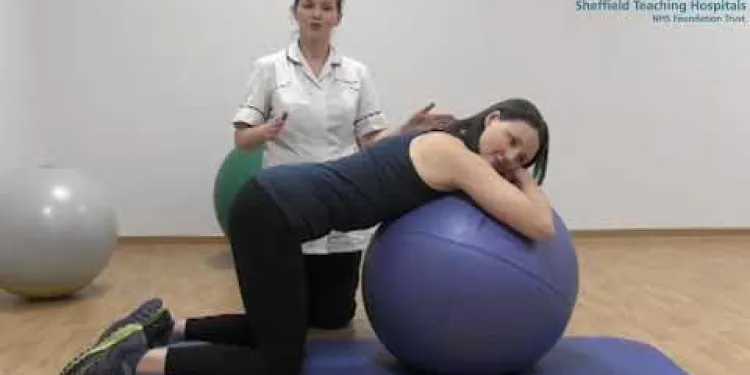
Mat and gym ball exercises with pregnancy related Pelvic Girdle Pain
Relevance: 43%
-

Can exercises help with labor preparation?
Relevance: 38%
-

Prolapse Types and Tips
Relevance: 38%
-

Physiotherapy Assessment of Urinary Incontinence
Relevance: 38%
-

Incontinence | NHS
Relevance: 38%
-

Incontinence and Prolapse - Physiotherapy Advice
Relevance: 36%
-

Prolapse Management
Relevance: 33%
-

Newcastle Specialist Continence Service's Light Urinary Incontinence Project
Relevance: 32%
-

Pelvic Girdle Pain Advice Class
Relevance: 30%
-

Can lifestyle changes help manage BPH symptoms?
Relevance: 29%
-
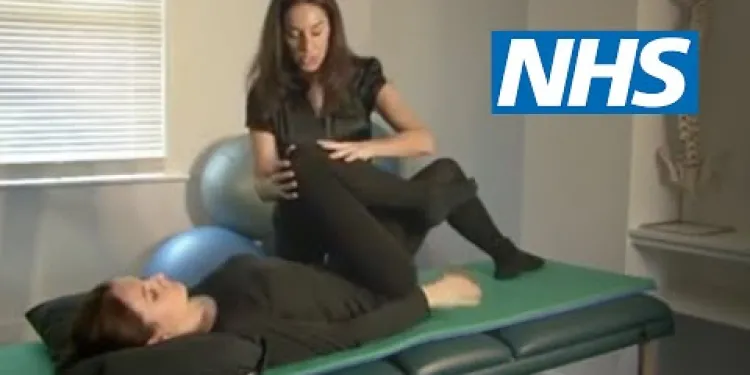
Exercises for sciatica: spinal stenosis | NHS
Relevance: 29%
-

What exercises can I do during pregnancy?
Relevance: 28%
-

Exercises for sciatica: herniated or slipped disc | NHS
Relevance: 28%
-
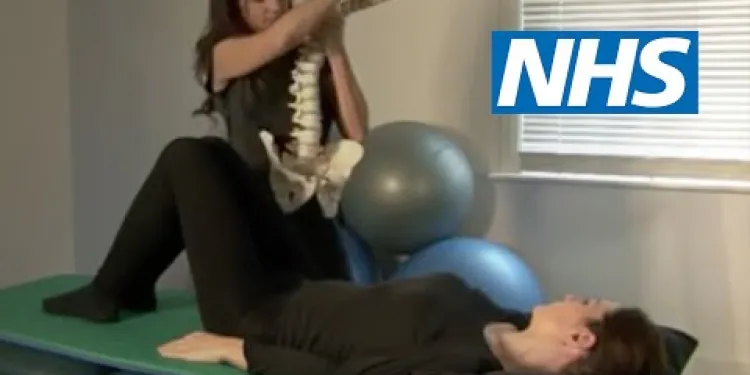
Exercises for sciatica: herniated or slipped disc | NHS
Relevance: 26%
-

BSL Pelvic inflammatory disease (PID)
Relevance: 26%
-

Can I do abdominal exercises during pregnancy?
Relevance: 25%
-

Can I do high-impact exercises while pregnant?
Relevance: 24%
-

Can I take exercise classes during pregnancy?
Relevance: 23%
-

Understanding Your Sexual Health - Pelvic Inflammatory Disease
Relevance: 23%
-
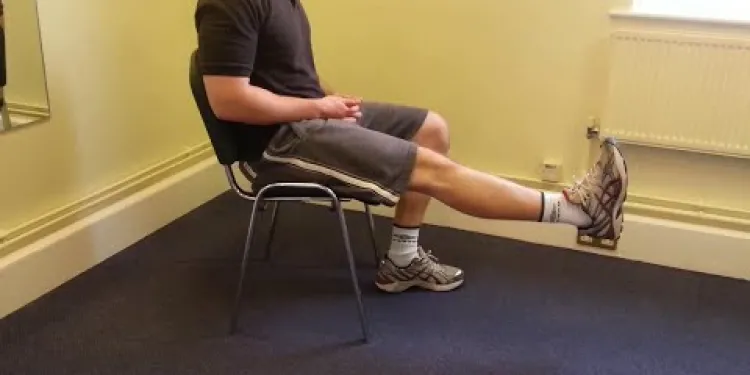
Knee Care Exercises
Relevance: 23%
-
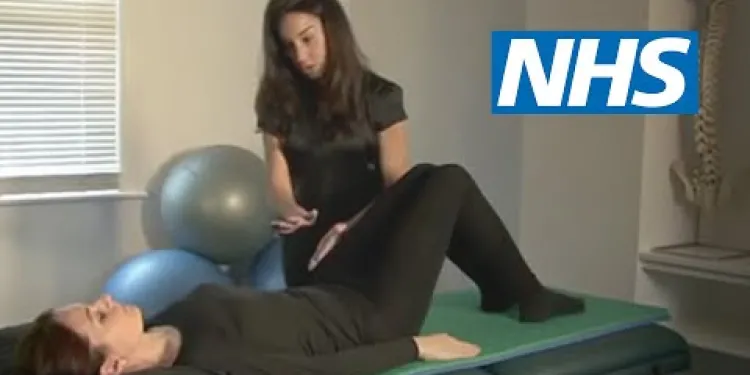
Exercises for sciatica: degenerative disc disease | NHS
Relevance: 23%
-
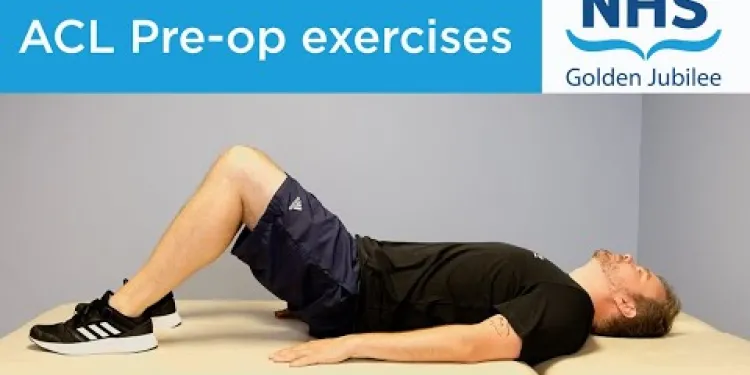
ACL pre-operation exercises
Relevance: 23%
-
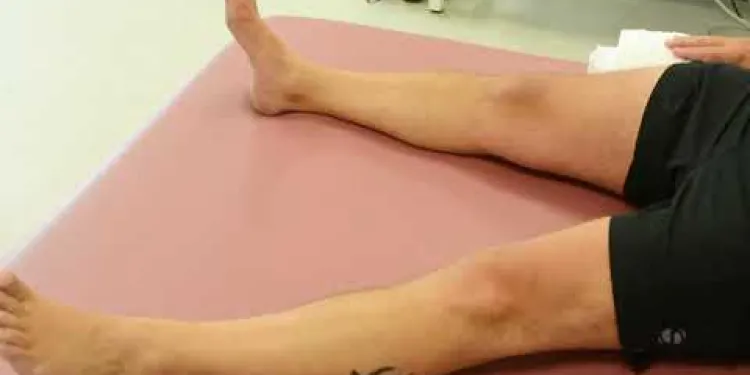
Joint School - Hip Exercises
Relevance: 22%
-

Are there any complications associated with untreated BPH?
Relevance: 22%
-

Neck Exercises
Relevance: 20%
-

Neck Exercises
Relevance: 20%
-

Shoulder Exercises 1
Relevance: 20%
-

Exercises for sciatica: piriformis syndrome | NHS
Relevance: 20%
-
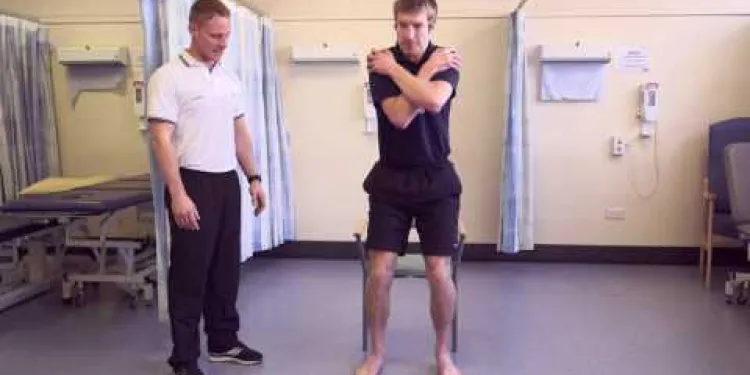
Exercises to help your lateral hip pain
Relevance: 20%
-
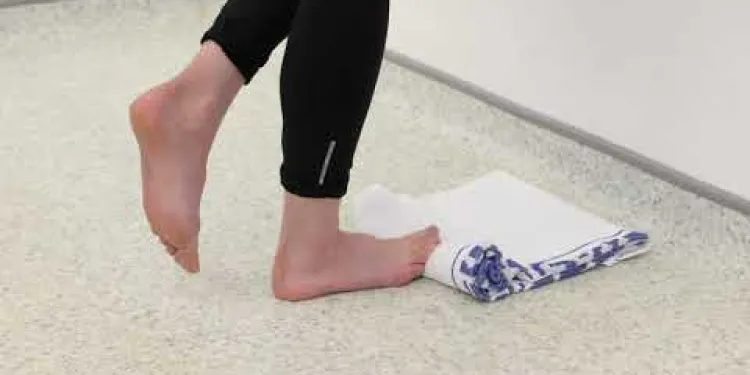
Plantar Fascia Loading Exercise (High Load Exercise)
Relevance: 20%
Pelvic Floor Exercises
Pelvic floor exercises, also known as Kegel exercises, are a series of exercises designed to strengthen the muscles of the pelvic floor. These muscles support the bladder, uterus, and bowel, and play a crucial role in controlling urinary and fecal continence, as well as sexual function.
Here's a simple guide on how to do pelvic floor exercises:
1. **Identify the muscles**: Before you can start exercising them, you need to locate your pelvic floor muscles. One way to do this is to stop urination midstream. The muscles you use to do this are your pelvic floor muscles. However, it's important not to regularly practice Kegel exercises while urinating, as it can lead to bladder emptying issues.
2. **Contract the muscles**: Once you've identified your pelvic floor muscles, you can begin exercising them. Sit, stand, or lie down comfortably. Tighten your pelvic floor muscles as if you're trying to stop the flow of urine or prevent passing gas. You should feel a pulling sensation in your pelvis.
3. **Hold the contraction**: Once you've tightened your pelvic floor muscles, hold the contraction for about 3-5 seconds, or as long as you can comfortably manage without straining other muscles.
4. **Relax**: After holding the contraction, relax your pelvic floor muscles for about the same amount of time as you held the contraction.
5. **Repeat**: Aim for 10-15 repetitions per session, gradually increasing the number of repetitions as your muscles strengthen. Try to do these exercises at least three times a day.
It's important to note that while doing Kegel exercises, you should focus only on contracting the pelvic floor muscles without tightening your abdomen, buttocks, or thighs. Also, remember to breathe normally throughout the exercises.
Regularly practicing pelvic floor exercises can help prevent or improve urinary incontinence, support pelvic organs, and enhance sexual function. However, if you have any concerns about pelvic floor health or experience pain or discomfort while doing these exercises, it's advisable to consult a healthcare professional for guidance. They can provide personalized advice and may recommend additional treatments or exercises tailored to your specific needs.
Pelvic Floor Exercises: Using Your Pelvic Floor to Calm Down Your Bladder
Understanding the Pelvic Floor
The pelvic floor is a group of muscles that span the bottom of the pelvis. These muscles support essential organs such as the bladder, bowel, and uterus in women. In essence, a strong and healthy pelvic floor helps maintain bladder and bowel control, as well as influence sexual function. In the United Kingdom, many individuals, particularly women, experience weakened pelvic floor muscles due to factors like childbirth, aging, or being overweight.The Importance of Pelvic Floor Exercises
Pelvic floor exercises, also known as Kegel exercises, are designed to strengthen these crucial muscles. Strengthening the pelvic floor can significantly help in controlling the bladder, thereby reducing the urgency and frequency of needing to urinate. These exercises are particularly beneficial for those experiencing stress incontinence, a condition where actions like coughing, sneezing, or lifting heavy objects lead to urine leakage.How to Perform Pelvic Floor Exercises
Performing pelvic floor exercises is simple and can be done almost anywhere without any special equipment. Here are the basic steps: 1. **Identify the right muscles**: Try to stop urinating in mid-flow. The muscles you use to do this are your pelvic floor muscles. However, don't make a habit of doing this during urination as it can lead to other issues. 2. **Assume a comfortable position**: You can do these exercises while sitting, standing, or lying down. 3. **Contract the muscles**: Tighten your pelvic floor muscles, hold the contraction for 5 seconds, then relax for 5 seconds. Repeat this 10 times. 4. **Increase the duration**: As your muscles get stronger, try to hold the contractions for 10 seconds with a 10-second relaxation in between.Consistency and Patience
Consistency is key to seeing results from pelvic floor exercises. Aim to do these exercises at least three times a day. Like any muscle-building exercise, it may take a few weeks to notice an improvement. Being patient and persistent will bring benefits such as better bladder control and reduced urinary urgency.Professional Guidance
If you're experiencing difficulty or unsure whether you're doing the exercises correctly, consider seeking advice from a healthcare professional, such as a physiotherapist specializing in pelvic health. In the UK, the NHS provides resources and support for individuals dealing with pelvic floor issues. In summary, pelvic floor exercises are a safe, effective method to strengthen your pelvic floor muscles and improve bladder control. By incorporating these exercises into your daily routine, you can achieve better bladder health and enhance your overall quality of life.Pelvic Floor Exercises
Pelvic floor exercises are also called Kegel exercises. They help make the muscles in the pelvic area stronger. These muscles help you control when you go to the toilet and are important for having babies and enjoying sex.
Here is an easy way to do pelvic floor exercises:
1. Find the muscles: To find your pelvic floor muscles, try stopping your pee halfway through peeing. The muscles you use to do this are your pelvic floor muscles. Do not do this regularly while peeing, as it could cause problems.
2. Squeeze the muscles: Once you know where your pelvic floor muscles are, you can start to exercise them. You can sit, stand, or lie down. Squeeze your pelvic floor muscles like you are trying to stop peeing or passing gas. You should feel a gentle pull inside you.
3. Hold the squeeze: After squeezing, hold it for 3-5 seconds or as long as you can without feeling uncomfortable.
4. Relax: After holding, relax your muscles for the same amount of time you held them.
5. Repeat: Do this 10-15 times. Try to do these exercises 3 times every day.
When you do Kegel exercises, focus only on the pelvic muscles. Do not tighten your belly, bottom, or legs. Remember to breathe normally. Doing these exercises can help you control when you pee, support your bladder and other organs, and improve sex. If you feel pain or have questions, ask a doctor or nurse for help. They can give you more advice and exercises.
Pelvic Floor Exercises: Using Your Pelvic Floor to Calm Down Your Bladder
What is the Pelvic Floor?
The pelvic floor is a group of muscles at the bottom of your hips. These muscles hold up important parts of your body, like the bladder, bowel, and uterus in women. A strong pelvic floor helps you control when you pee and poop. It also helps with sex. In the UK, many people, especially women, have weak pelvic floor muscles. This can happen because of having babies, getting older, or being overweight.Why Do Pelvic Floor Exercises?
Pelvic floor exercises, also called Kegel exercises, make these muscles stronger. When your pelvic floor is strong, you can control your bladder better. This means you might not need to pee as often or with as much urgency. These exercises are helpful if you sometimes leak pee when you cough, sneeze, or lift heavy things.How to Do Pelvic Floor Exercises
You can do these exercises anywhere, and you don't need any special equipment. Here’s how: 1. **Find the right muscles**: Try to stop peeing in the middle of going to the bathroom. The muscles you use are your pelvic floor muscles. But don't do this when you’re actually peeing, because it can cause problems. 2. **Get comfortable**: You can sit, stand, or lie down to do these exercises. 3. **Squeeze the muscles**: Tighten your pelvic floor muscles. Hold for 5 seconds, then relax for 5 seconds. Do this 10 times. 4. **Try to hold longer**: As your muscles get stronger, try to hold for 10 seconds and relax for 10 seconds.Keep Practicing
To see results, you need to practice these exercises regularly, at least three times a day. It might take a few weeks to notice changes, so be patient. Doing these exercises can help you gain better control over your bladder.Getting Help
If you find it hard to do these exercises or are unsure if you’re doing them right, talk to a healthcare professional. A physiotherapist who knows about pelvic health can help. In the UK, the NHS offers support for people dealing with pelvic floor issues. Overall, doing pelvic floor exercises is a safe and effective way to make your pelvic floor muscles stronger and improve bladder control. By making these exercises part of your daily routine, you can also improve your overall well-being.Frequently Asked Questions
What are pelvic floor exercises?
Pelvic floor exercises, also known as Kegels, involve contracting and relaxing the muscles that support the bladder, bowel, and uterus to improve their strength and function.
How do pelvic floor exercises help calm the bladder?
Pelvic floor exercises help strengthen the muscles that support the bladder, reducing symptoms of urgency and incontinence by promoting better control over bladder function.
How often should I perform pelvic floor exercises?
It is recommended to perform pelvic floor exercises daily, aiming for at least 5-10 minutes in multiple sessions throughout the day.
How long does it take to see results from pelvic floor exercises?
It may take several weeks to a few months of consistent practice to notice improvements in bladder control and pelvic muscle strength.
Can men do pelvic floor exercises?
Yes, men can also benefit from pelvic floor exercises, particularly for improving bladder control and supporting prostate health.
What is the correct way to perform a pelvic floor exercise?
To perform a pelvic floor exercise, tighten your pelvic muscles as if you are trying to stop the flow of urine, hold the contraction for a few seconds, and then relax. Repeat the process multiple times.
Can pelvic floor exercises help with other issues besides bladder control?
Yes, pelvic floor exercises can also improve bowel control, reduce the risk of pelvic organ prolapse, and enhance sexual function.
Do I need any special equipment to do pelvic floor exercises?
No special equipment is needed to perform pelvic floor exercises. They can be done discreetly anywhere, whether sitting, standing, or lying down.
How can I tell if I am doing pelvic floor exercises correctly?
If you are doing the exercises correctly, you should feel a lifting or tightening sensation in the pelvic area, and the muscles should not contract other parts of your body like the abdomen or buttocks.
Are there any risks associated with pelvic floor exercises?
Pelvic floor exercises are generally safe, but it's essential to perform them correctly. Over-exercising or doing the exercises incorrectly can lead to muscle strain or discomfort.
Can pelvic floor exercises help with overactive bladder?
Yes, pelvic floor exercises can be beneficial in managing symptoms of overactive bladder by improving bladder control and reducing urgency.
How do I locate my pelvic floor muscles?
To locate your pelvic floor muscles, try to stop the flow of urine mid-stream. The muscles used to do this are your pelvic floor muscles.
Should I stop doing pelvic floor exercises if I don't see immediate results?
No, it's important to keep doing the exercises consistently. It can take several weeks or even months to notice significant changes.
Are there any professional resources available for learning pelvic floor exercises?
Yes, a physiotherapist or a healthcare provider specializing in pelvic health can offer guidance and tailored exercises to ensure you are performing them correctly.
Can pregnant women perform pelvic floor exercises?
Yes, pelvic floor exercises are highly recommended during pregnancy as they can help support the pelvic organs during pregnancy and assist recovery post childbirth.
What Are Pelvic Floor Exercises?
Pelvic floor exercises are simple movements. They help make muscles strong. These muscles support the bladder, bowels, and more.
When you do these exercises, you squeeze and lift the muscles. This can help with bladder control and other health problems.
Here are some tips to help:
- Use a picture book to learn the exercises.
- Ask someone, like a doctor, to show you how.
- Practice a little bit every day.
Pelvic floor exercises are exercises for your tummy and bottom. They are also called Kegels. These exercises make the muscles around your bladder, bowel, and tummy strong. This helps them work better.
How can exercises help control the bladder?
Doing special exercises can help your bladder. These exercises make the muscles strong. Strong muscles can stop pee from leaking.
To start, try squeezing the muscles you use to stop peeing. Hold for a few seconds, then let go. Do this a few times a day.
These exercises are sometimes called "Kegels." They are easy to do at home.
If you want, you can ask a doctor or nurse for help. They can show you how to do the exercises right.
You can also set a reminder on your phone. This can help you remember to do the exercises every day.
Pelvic floor exercises make the muscles around the bladder strong. Strong muscles help you control when you need to go to the toilet. This means you won't need to go to the toilet so often or have accidents.
To help you do these exercises, you can try using videos or apps that show you how. Ask a grown-up or a friend to practice with you.
How many times should I do pelvic floor exercises?
It's good to do pelvic floor exercises every day. Try to do them 3 times a day.
Here are some tips to help you remember:
- Do the exercises at the same time every day. For example, in the morning, afternoon, and evening.
- Set a reminder on your phone.
- Ask a friend or family member to remind you.
Try to do pelvic floor exercises every day. Aim to do them for 5 to 10 minutes, a few times during the day.
Here are some tips to help you remember:
- Set a reminder on your phone or watch.
- Do the exercises at the same time each day, like after breakfast, lunch, and dinner.
- Use an app designed to guide you through the exercises.
How long until I see changes from pelvic floor exercises?
How much time will it take for me to see changes? This can be different for everyone, but usually, it takes a few weeks. Keep doing the exercises every day.
Try using a timer to remind you. You can also ask a doctor or nurse for help.
It can take a few weeks or even a few months to get better at controlling your bladder and making your pelvic muscles stronger. You need to practice regularly.
Can men do exercises for their pelvic floor?
Yes, men can do pelvic floor exercises too. These exercises can help them control their bladder better and keep their prostate healthy.
How do you do a pelvic floor exercise?
Pelvic floor exercises help make your muscles stronger.
To do this exercise:
- Sit or lie down in a comfy spot.
- Tighten the muscles as if you are stopping a wee.
- Hold the squeeze for a few seconds.
- Then relax your muscles.
- Try to do this 10 times in a row.
- Do this a few times every day.
Tips to help you:
- You can use a timer to help count how long you hold the squeeze.
- You can use an app or chart to remember to do your exercises.
- Ask a doctor or therapist if you need more help.
To do a pelvic floor exercise, squeeze your pelvic muscles like you are trying to stop peeing. Hold it for a few seconds, then let go. Do this a few times.
Can pelvic floor exercises help with other things besides bladder control?
Yes, pelvic floor exercises can help with other things too. They can help with:
- Stopping leaks when you cough or sneeze.
- Helping with bowel control.
- Making your tummy and back stronger.
- Improving how you feel when you are with your partner.
For help with these exercises, you can:
- Use videos online to show you how.
- Ask a physiotherapist for help.
- Use an app or book for guidance.
Yes, doing pelvic floor exercises can help with going to the toilet. It can stop problems with pelvic organs and make sex better.
Do I need special tools to do pelvic floor exercises?
You don't need any special tools to do pelvic floor exercises. You can do them anywhere. You just need to know how to use your muscles. If you want help, you can try videos that show you what to do. You can also ask a doctor or nurse for advice. They can help show you the right way to do the exercises.
You do not need any special tools to do pelvic floor exercises. You can do them anywhere, even when you are sitting, standing, or lying down.
How do I know if I am doing pelvic floor exercises right?
Here are some tips to help you:
- When you squeeze your pelvic floor, it should feel like you are stopping yourself from peeing.
- Make sure you are not using your stomach, legs, or bum muscles.
- You should be able to breathe normally while doing these exercises.
- If you are unsure, ask a doctor or physical therapist for help.
Some helpful things you can try:
- Use a mirror to watch your tummy stay relaxed as you exercise.
- Try putting a hand on your tummy to check it's not tightening.
- Listen to calming music to relax while you practice.
When you do the exercises right, you will feel a lift or a squeeze in your lower tummy area. Your other body parts, like your stomach or bottom, should not be moving.
Are pelvic floor exercises safe?
Pelvic floor exercises are usually safe for most people.
But some people might feel some pain or discomfort.
If you feel pain, you should stop and talk to a doctor.
It can help to talk to a physiotherapist who knows about pelvic floors.
You can also use apps or videos to learn the right way to do the exercises.
Doing exercises for the pelvic floor is usually safe. But it's important to do them the right way. If you do too many or do them wrong, it might hurt your muscles or make you feel uncomfortable.
Do pelvic floor exercises help if you go to the toilet a lot?
Yes, doing exercises for your pelvic floor can help if you need to go to the bathroom a lot. These exercises make it easier to control when you pee and can stop the feeling that you have to go right now.
How do I find my pelvic floor muscles?
Your pelvic floor muscles are important. They support your bladder and bowel.
Try this to find them:
- When you go to the toilet to pee, try to stop the flow mid-stream. The muscles you use to do this are your pelvic floor muscles.
- Remember: Do not do this every time you pee. It's just a way to find the muscles.
Helpful tips:
- You can practice tightening and relaxing these muscles while sitting or lying down.
- You can use a mirror to see where these muscles are. This might help you understand better.
- Ask a parent, carer, or health professional if you need help.
To find your pelvic floor muscles, try to stop peeing in the middle. The muscles you use to do this are your pelvic floor muscles.
Should I stop doing pelvic floor exercises if I don't see results right away?
It's important to keep trying, even if you don't see changes quickly. It can take time for your muscles to get stronger.
Here are some tips to help you:
- Be patient and keep practicing regularly.
- Try using a reminder or an app to help you remember to do the exercises.
- Ask a doctor or therapist for advice if you're unsure.
No, you should keep doing the exercises regularly. It might take a few weeks or even months to see big changes.
Can I find help to learn pelvic floor exercises?
Yes, you can find help! Here are some ideas:
- Ask a doctor or nurse for advice.
- Look for videos online that show you how to do the exercises.
- Read a simple book about pelvic floor exercises.
- Join a class where a teacher can help you learn.
These are good ways to learn!
Yes, a special doctor called a physiotherapist can help. They know about pelvic health. They can show you the right exercises to do.
Can pregnant women do pelvic floor exercises?
Yes, pregnant women can do pelvic floor exercises. These exercises help keep the muscles strong. This is good for your body when you are having a baby.
Here are some tips to help:
- Breathe slowly and relax when you do the exercises.
- Ask your doctor or nurse if you are not sure.
- You can use videos or apps to show you how to do the exercises.
Yes, doing exercises for your pelvic floor is a good idea when you are pregnant. These exercises help keep your pelvic organs strong while you are pregnant and help you get better after having your baby.
Useful Links
- Ergsy carfully checks the information in the videos we provide here.
- Videos shown by Youtube after a video has completed, have NOT been reviewed by ERGSY.
- To view, click the arrow in centre of video.
- Most of the videos you find here will have subtitles and/or closed captions available.
- You may need to turn these on, and choose your preferred language.
- Go to the video you'd like to watch.
- If closed captions (CC) are available, settings will be visible on the bottom right of the video player.
- To turn on Captions, click settings .
- To turn off Captions, click settings again.
More Items From Ergsy search
-

Pelvic Floor Exercises - Using Your Pelvic Floor to Calm Down Your Bladder
Relevance: 100%
-

Pelvic Floor Exercises - Using Your Pelvic Floor to Calm Down Your Bladder
Relevance: 100%
-

How to do pelvic floor exercises | NHS
Relevance: 85%
-

The Pelvic Floor Muscles - Developing an Exercise Programme
Relevance: 84%
-

Pelvic health: Urge Incontinence
Relevance: 56%
-

Pelvic health: prolapse
Relevance: 54%
-

Pelvic health: prolapse
Relevance: 53%
-

Pelvic health: stress urinary incontinence
Relevance: 52%
-

Your pelvic health matters: insights from NHS clinicians
Relevance: 50%
-

Incontinence and Prolapse - Physiotherapy Advice
Relevance: 46%
-

Mat and gym ball exercises with pregnancy related Pelvic Girdle Pain
Relevance: 43%
-

Can exercises help with labor preparation?
Relevance: 38%
-

Prolapse Types and Tips
Relevance: 38%
-

Physiotherapy Assessment of Urinary Incontinence
Relevance: 38%
-

Incontinence | NHS
Relevance: 38%
-

Incontinence and Prolapse - Physiotherapy Advice
Relevance: 36%
-

Prolapse Management
Relevance: 33%
-

Newcastle Specialist Continence Service's Light Urinary Incontinence Project
Relevance: 32%
-

Pelvic Girdle Pain Advice Class
Relevance: 30%
-

Can lifestyle changes help manage BPH symptoms?
Relevance: 29%
-

Exercises for sciatica: spinal stenosis | NHS
Relevance: 29%
-

What exercises can I do during pregnancy?
Relevance: 28%
-

Exercises for sciatica: herniated or slipped disc | NHS
Relevance: 28%
-

Exercises for sciatica: herniated or slipped disc | NHS
Relevance: 26%
-

BSL Pelvic inflammatory disease (PID)
Relevance: 26%
-

Can I do abdominal exercises during pregnancy?
Relevance: 25%
-

Can I do high-impact exercises while pregnant?
Relevance: 24%
-

Can I take exercise classes during pregnancy?
Relevance: 23%
-

Understanding Your Sexual Health - Pelvic Inflammatory Disease
Relevance: 23%
-

Knee Care Exercises
Relevance: 23%
-

Exercises for sciatica: degenerative disc disease | NHS
Relevance: 23%
-

ACL pre-operation exercises
Relevance: 23%
-

Joint School - Hip Exercises
Relevance: 22%
-

Are there any complications associated with untreated BPH?
Relevance: 22%
-

Neck Exercises
Relevance: 20%
-

Neck Exercises
Relevance: 20%
-

Shoulder Exercises 1
Relevance: 20%
-

Exercises for sciatica: piriformis syndrome | NHS
Relevance: 20%
-

Exercises to help your lateral hip pain
Relevance: 20%
-

Plantar Fascia Loading Exercise (High Load Exercise)
Relevance: 20%


